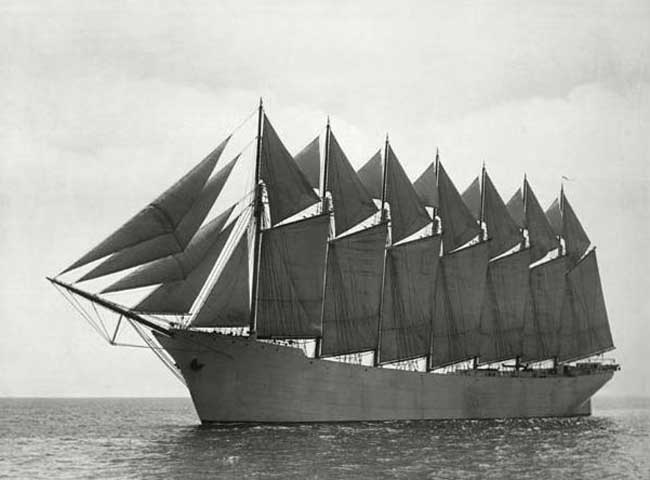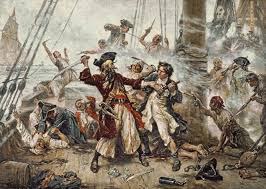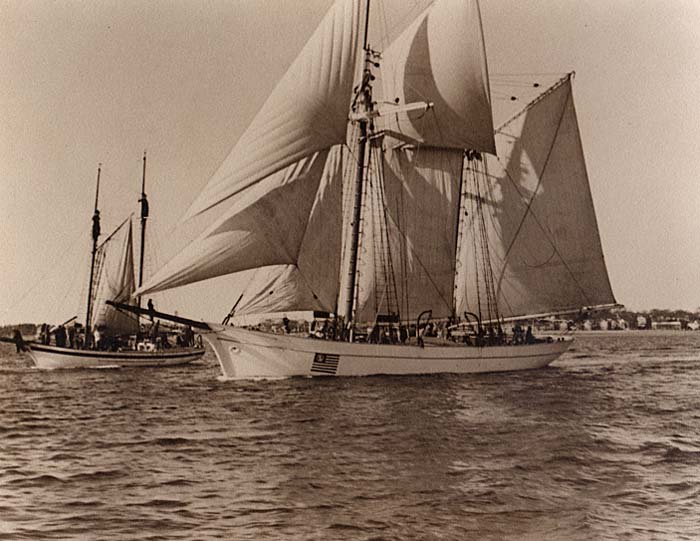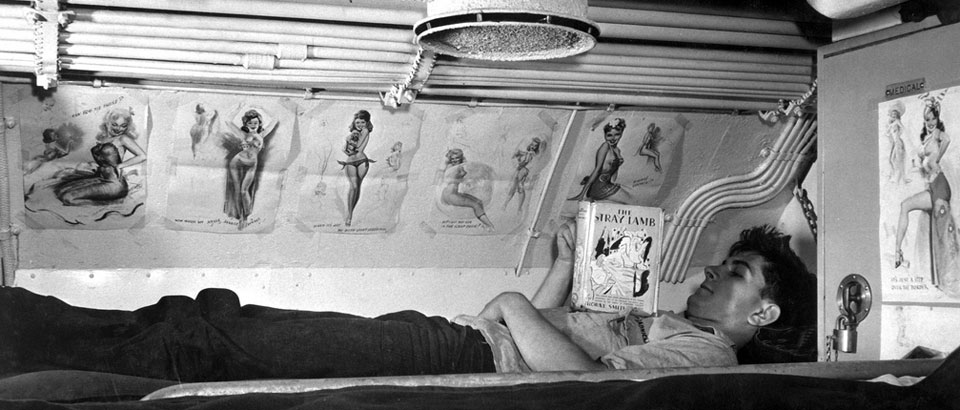My Favorite Schooner
We on the Schooner Freedom are not ashamed to admit that we are schooner dorks. We argue about the names of masts on four masted schooners, how big you could make that jib, and we look up other schooners, just because we want to know about them. I love it, it makes me happy and you have

some great stuff to talk about when you meet other schooner dorks. My personal favorite schooner, other than the Freedom, of course, is the Schooner Thomas W. Lawson. It was a seven (yeah, I said seven) masted steel schooner. It was, to date:
1. The largest schooner ever built, in terms of tonnage – 5218 gross tons
2. The largest pure sailing vessel ever built – aka, it had no engine, none at all
3. The only seven masted schooner
4. The only seven masted sailing ship of modern times
5. Responsible for most likely the first major oil spill from a ship in modern history, not the best record to hold, but still of some note.
Launched on July 10, 1902, the Thomas W. Lawson was 395 feet in length (lod = length on deck), contained seven masts of equal height (193 feet) from which 25 sails (seven gaff sails, seven gaff topsails, six topmast staysails, and five job sails (fore staysail, jib, flying jib, jib topsail, balloon jib) encompassing 43,000 square feet of canvas would power her – that’s a whole lot of canvas.
What really intrigued me about the Lawson was the naming of the seven masts. I’ve found two sets of names, the “proper” names and the crew names. The proper names are, from fore to aft:
.jpg)
1. Fore
2. Main
3. Mizzen
4. Spanker
5. Jigger
6. Driver
7. Pusher
The crew called them, according to a letter by the ship’s first master Capt. Arthur L. Crowley and preserved at the Peabody Essex Museum, Salem, MA, the seven masts were called:
1.Fore
2. Main
3. Mizzen
4. Number 4
5. Number 5
6. Number 6
7. Spanker
There are also some that assert the masts were called by the days of the week, with foremost being Sunday and the aftmost being Saturday.
Although originally designed for the trans-Pacific trade, she was used in the coal trade until she was rebuilt in 1906 at the Newport News Shipbuilding & Drydock Co. for carrying oil in bulk. The topmasts were also removed at that time and the lower masts were used to vent the holds from oil gases. Bound for London loaded with oil she was caught in a storm off the Scilly Islands on the 13th of December 1907. As she could not weather the islands it was decided to try to anchor, but during the night her anchor chain broke and she stranded on the Scilly Islands. Thirteen of the crew lost their lives.
Some of you may notice the prevalence of the number 13 – she sank of Friday the thirteenth she lost thirteen of the crew, and her name, Thomas W. Lawson, had 13 letters. This has of course led to much superstitious hubbabub regarding the Lawson, most indicating, she had it coming.
The Lawson had many critics while she was still above the water too. Many considered her sluggish and hard to maneuver, comparing her to a beached whale. Because of the amount of water she displaced, it was difficult to competently operate her in most ports. She needed strong winds to make any significant way and apparently had a tendency to yaw very badly. I know, not good recommendations. I still am fascinated by her. She was built as an answer to the challenge of steam engines, as a last ditch effort to keep the great days of sail going. It didn’t work, obviously, but I like the gusto and confidence with which this boat was constructed. I love that sailing ships didn’t just roll over and die, but tried to keep up. It may not have been successful, but it forced sailors to leave the shipping industry and adapt to other forms of economy, educational platforms, living history museums, bareboat cruises, and day sailing. From some of our greatest failures come our greatest triumphs.


